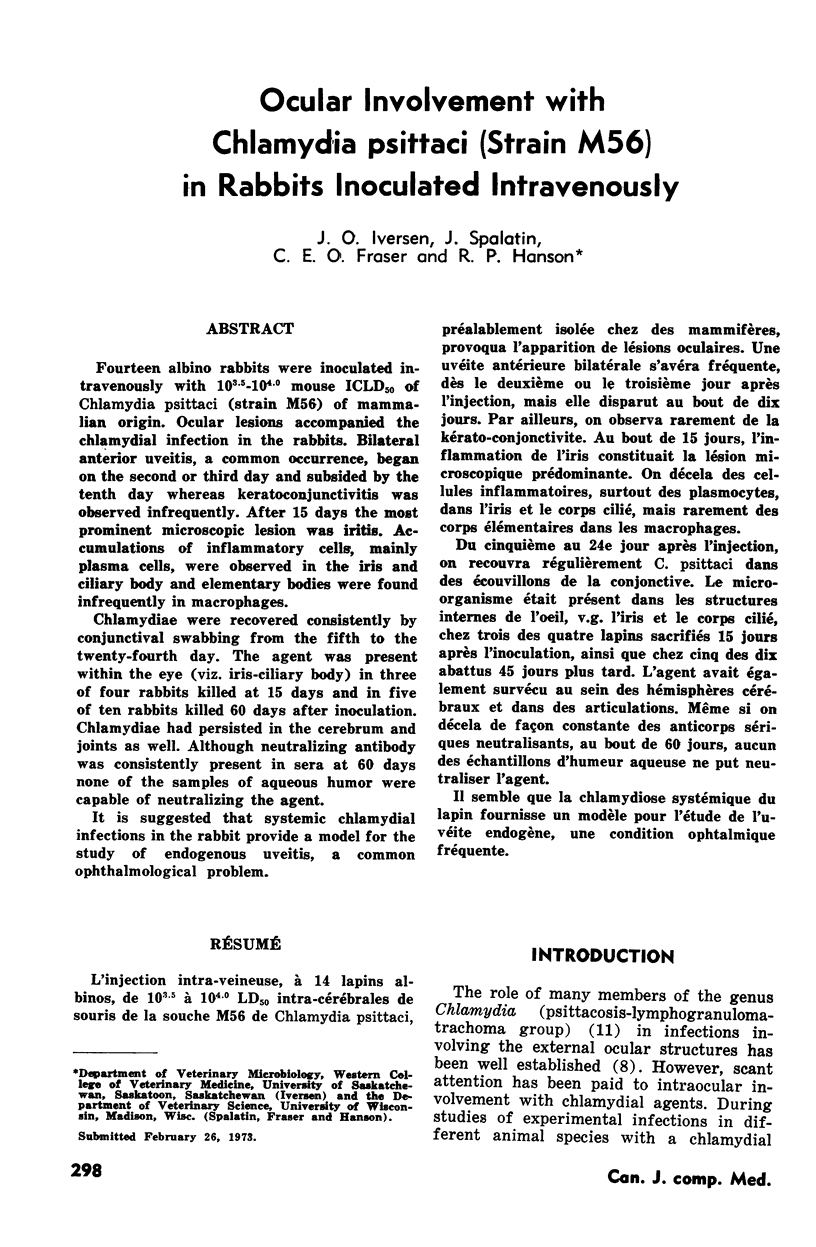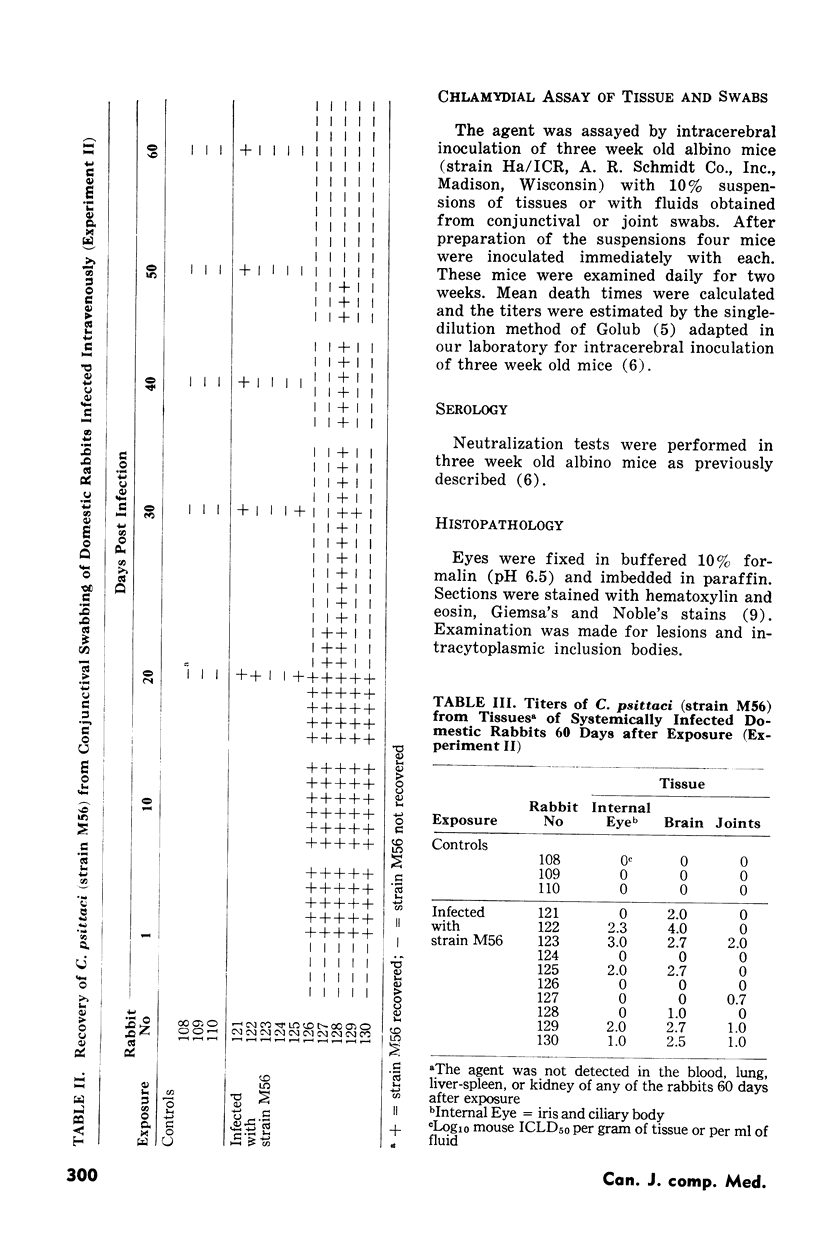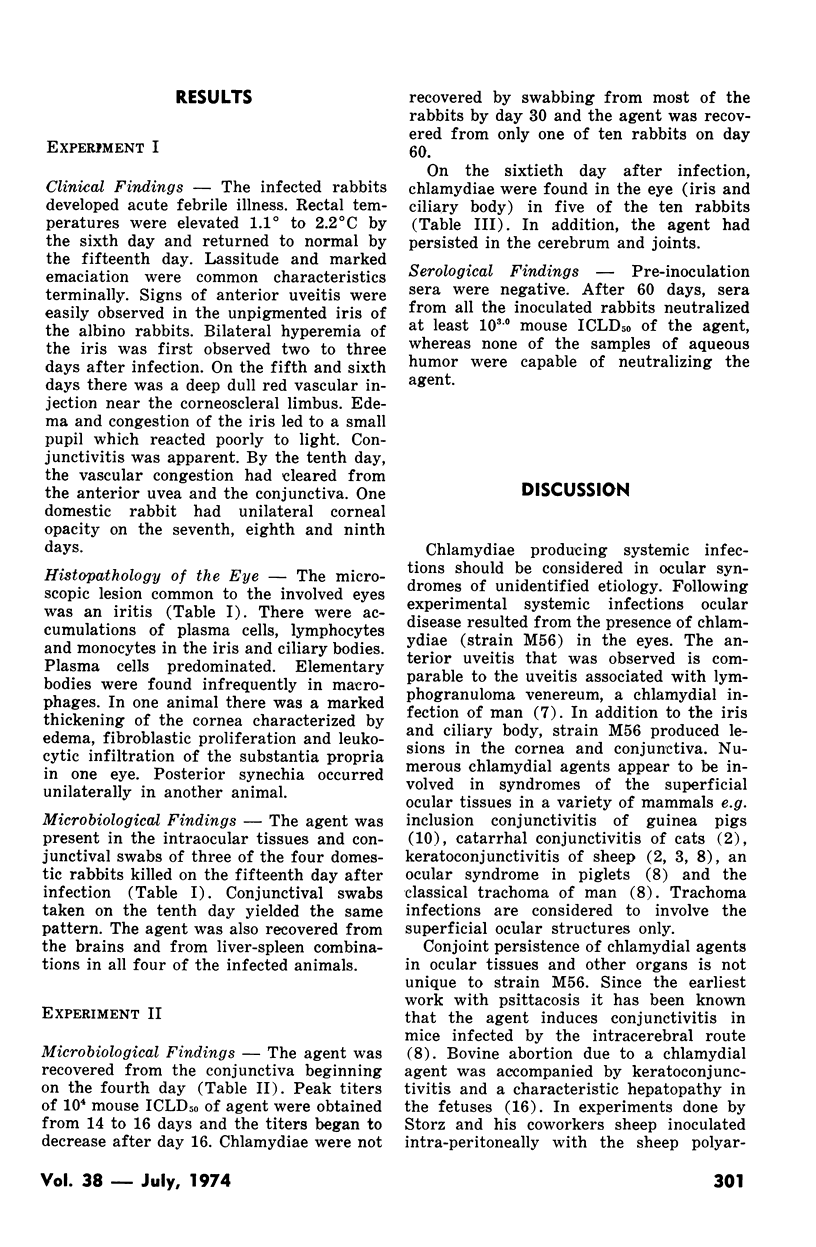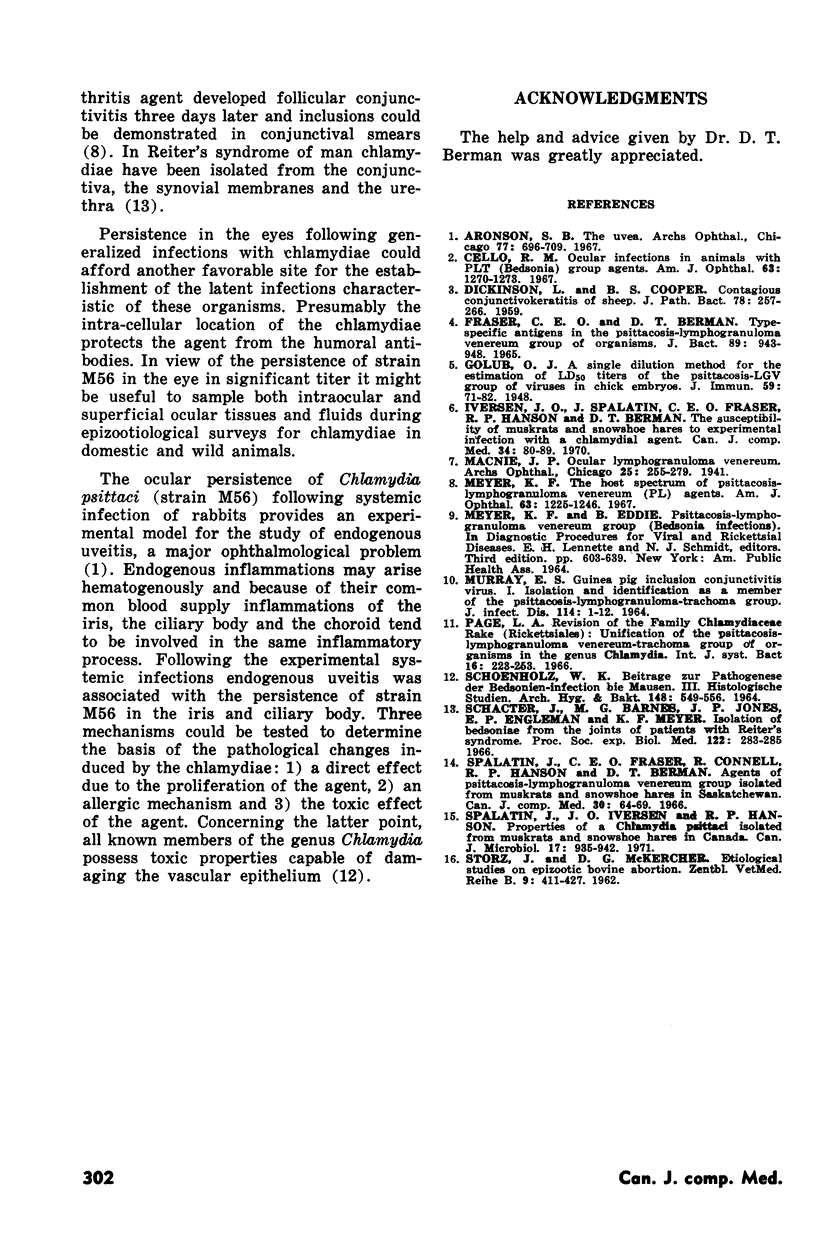Abstract
Fourteen albino rabbits were inoculated intravenously with 103.5-104.0 mouse ICLD50 of Chlamydia psittaci (strain M56) of mammalian origin. Ocular lesions accompanied the chlamydial infection in the rabbits. Bilateral anterior uveitis, a common occurrence, began on the second or third day and subsided by the tenth day whereas keratoconjunctivitis was observed infrequently. After 15 days the most prominent microscopic lesion was iritis. Accumulations of inflammatory cells, mainly plasma cells, were observed in the iris and ciliary body and elementary bodies were found infrequently in macrophages.
Chlamydiae were recovered consistently by conjunctival swabbing from the fifth to the twenty-fourth day. The agent was present within the eye (viz. iris-ciliary body) in three of four rabbits killed at 15 days and in five of ten rabbits killed 60 days after inoculation. Chlamydiae had persisted in the cerebrum and joints as well. Although neutralizing antibody was consistently present in sera at 60 days none of the samples of aqueous humor were capable of neutralizing the agent.
It is suggested that systemic chlamydial infections in the rabbit provide a model for the study of endogenous uveitis, a common ophthalmological problem.
Full text
PDF




Selected References
These references are in PubMed. This may not be the complete list of references from this article.
- Aronson S. B. The uvea. Arch Ophthalmol. 1967 May;77(5):696–709. doi: 10.1001/archopht.1967.00980020698027. [DOI] [PubMed] [Google Scholar]
- Cello R. M. Ocular infections in animals with PLT (Bedsonia) group agents. Am J Ophthalmol. 1967 May;63(5 Suppl):1270–1274. doi: 10.1016/0002-9394(67)94109-8. [DOI] [PubMed] [Google Scholar]
- DICKINSON L., COOPER B. S. Contagious conjunctivo-keratitis of sheep. J Pathol Bacteriol. 1959 Jul;78:257–266. doi: 10.1002/path.1700780128. [DOI] [PubMed] [Google Scholar]
- FRASER C. E., BERMAN D. T. TYPE-SPECIFIC ANTIGENS IN THE PSITTACOSIS-LYMPHOGRANULOMA VENEREUM GROUP OF ORGANISMS. J Bacteriol. 1965 Apr;89:943–948. doi: 10.1128/jb.89.4.943-948.1965. [DOI] [PMC free article] [PubMed] [Google Scholar]
- Iversen J. O., Spalatin J., Fraser C. E., Hanson R. P., Berman D. T. The susceptibility of muskrats and snowshoe hares to experimental infection with a chlamydial agent. Can J Comp Med. 1970 Jan;34(1):80–89. [PMC free article] [PubMed] [Google Scholar]
- MURRAY E. S. GUINEA PIG INCLUSION CONJUNCTIVITIS VIRUS. I. ISOLATION AND IDENTIFICATION AS A MEMBER OF THE PSITTACOSIS-LYMPHOGRANULOMA-TRACHOMA GROUP. J Infect Dis. 1964 Feb;114:1–12. doi: 10.1093/infdis/114.1.1. [DOI] [PubMed] [Google Scholar]
- Meyer K. F. The host spectrum of psittacosis-lymphogranuloma venereum (PL) agents. Am J Ophthalmol. 1967 May;63(5 Suppl):1225–1246. doi: 10.1016/0002-9394(67)94105-0. [DOI] [PubMed] [Google Scholar]
- SCHOENHOLZ W. K. BEITRAEGE ZUR PATHOGENESE DER BEDSONIENINFEKTION BEI MAEUSEN. 3. HISTOLOGISCHE STUDIEN. Arch Hyg Bakteriol. 1964 Sep;148:549–556. [PubMed] [Google Scholar]
- Schachter J., Barnes M. G., Jones J. P., Jr, Engleman E. P., Meyer K. F. Isolation of bedsoniae from the joints of patients with Reiter's syndrome. Proc Soc Exp Biol Med. 1966 May;122(1):283–285. doi: 10.3181/00379727-122-31113. [DOI] [PubMed] [Google Scholar]
- Spalatin J., Iversen J. O., Hanson R. P. Properties of a Chlamydia psittaci isolated from muskrats and snowshoe hares in Canada. Can J Microbiol. 1971 Jul;17(7):935–942. doi: 10.1139/m71-149. [DOI] [PubMed] [Google Scholar]


